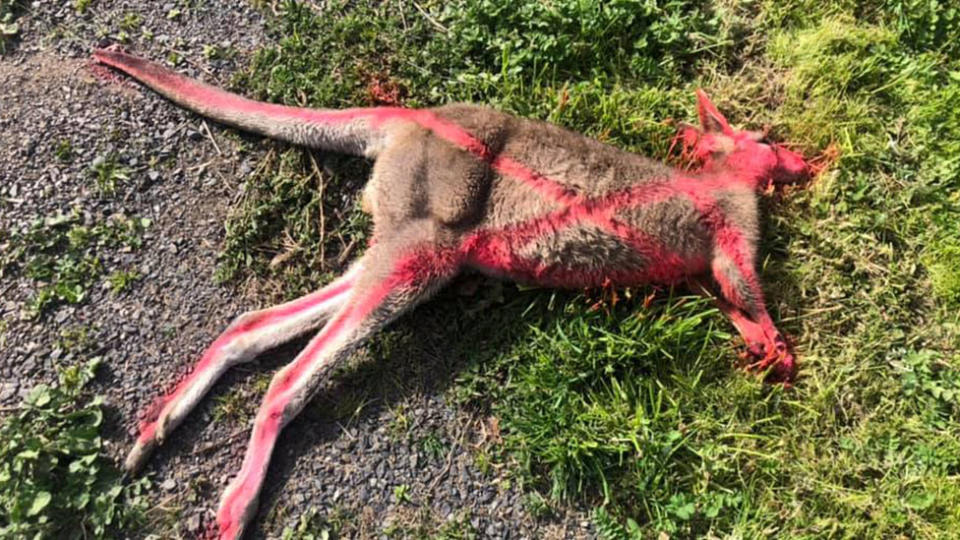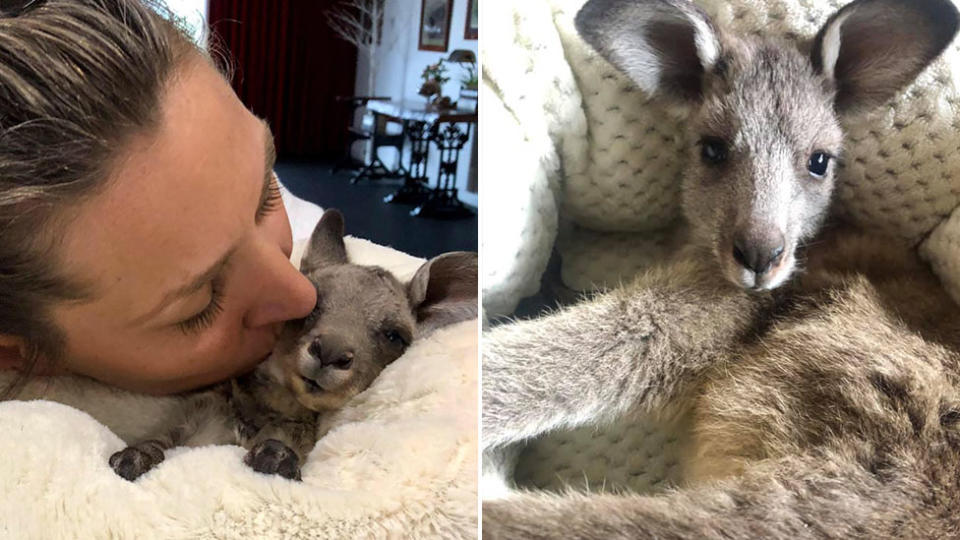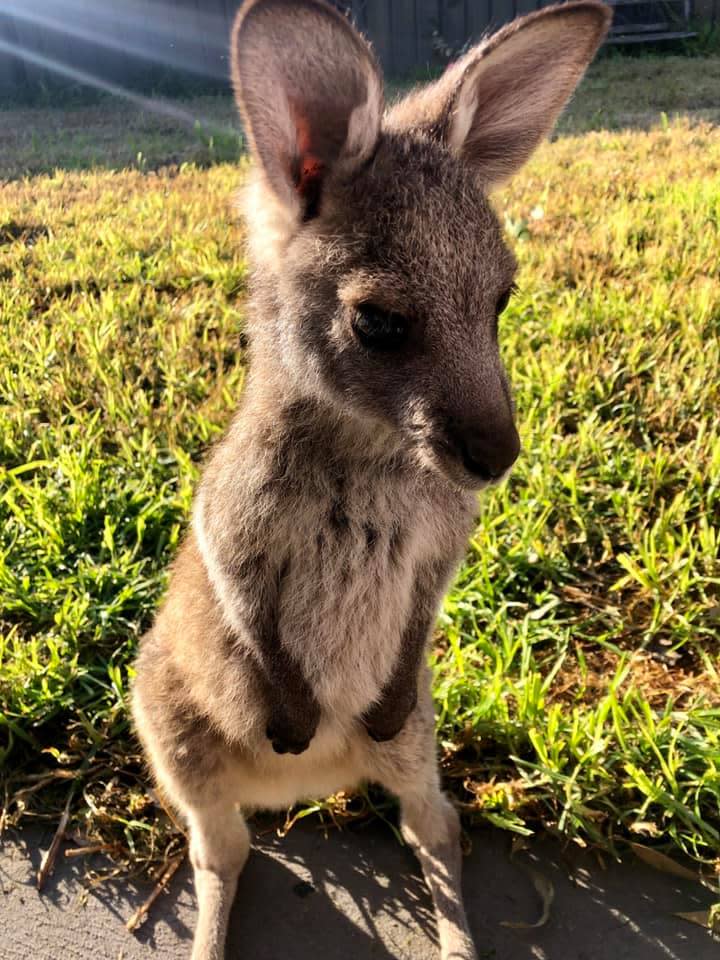The 'horrible' practice being stopped by spray painting dead kangaroos
Every year thousands of dead kangaroos are left on the side of the road sprayed with paint – and this is done for a good reason.
“People often think that it’s the council that spray the kangaroos on the side of the road,” wildlife organisation Rescue Rehabilitate Release wrote on Facebook.
But it is not always the council that marks the dead kangaroos.
Krysti Severi, from Victoria’s Rescue Rehabilitate Release, told Yahoo News Australia the spray paint was like a “code” for rescuers and stopped people from mutilating corpses to make souvenirs.

“It’s a way to let other rescuers know that we have checked the pouch and to make sure that the kangaroo isn’t lying next to the road still alive,” she said.
Ms Severi is a mother of two who works part time at night to rescue wildlife during the day.
Not only has she been rescuing wildlife for three years, she also fosters native wildlife – mainly possums and kangaroos.
In the Facebook post, Ms Severi said most rescuers preferred the spray paint to be visible from the front and the back.
She also recommends using bright paint – pink being her personal favourite.
Colours like white, silver, brown, yellow and purple tend to get lost in the fur.

Not only does the spray paint send a message to other rescuers, it also deters people from mutilating the corpse and using body parts for commercial reasons.
Ms Severi said people used the front arms for back scratchers and testicles for coin purses – spray painting these areas deters people from harvesting those parts.
“To me personally, it’s just wrong and I think most rescuers will agree,” she said.
“These poor animals suffer every single day. Just leave their bodies (intact) go back to nature.
“To hack off a limb for art or a back scratcher is just cruel in my opinion.”
Some social media users were surprised to learn this news.
“I didn’t know those parts were still gathered for souvenirs,” one person wrote underneath Rescue Rehabilitate Release’s post.
“Horrible practice.”
“When are people going to start respecting and loving our wildlife,” a second person said.
Ms Severi advised calling a local wildlife organisation if you came across a kangaroo on the side of the road that was visibly injured.
“They have experienced rescuers who can come out and either euthanise the animal or take it into care,” she said.
“If there is a joey, you have to make sure that it’s not attached to the teat first.”
If the joey is attached to the teat, the teat must be cut but only if the mother is already dead, Ms Severi explained.

“If the joey isn’t attached to the teat, they need to carefully remove the joey from the pouch.”
Once removing the joey from its mother, Ms Severi recommends keeping the young somewhere dark and warm – suggesting down a top, against the heart, if comfortable with doing so.
A local wildlife rescue organisation should be contacted immediately after rescuing a joey.
Ms Severi also notes it was important to move a deceased animal as far away from the road if possible and safe to do so.
“Other wildlife will feed on that animal and by leaving the deceased animal right near the road, you are also putting them at risk,” she said on Facebook.
Earlier this year, Ms Severi spoke to Yahoo News Australia about how urbanisation had a devastating effect on the kangaroo population.
“They’re locked into development areas, they’re boxed in. They don’t know where to go,” she said.
Ms Severi says local wildlife are suffering because people are not aware of what to do when they hit animals on the road.
Just because a kangaroo jumps off after being hit doesn’t mean they’re not injured.
“They’ll go on with adrenaline, it’s their fight or flight instinct and they’ll head off to try and find a safer environment,” Ms Severi explains.
The wildlife carer says motorists would be the second-biggest killer of kangaroos, the first would be the government.
Kangaroo culling is legal in Australia, with most states allowing such practises to mainly “keep numbers under control”.
Do you have a story tip? Email: newsroomau@yahoonews.com.
You can also follow us on Facebook and Twitter, download the Yahoo News app from the App Store or Google Play and stay up to date with the latest news with Yahoo’s daily newsletter. Sign up here.



